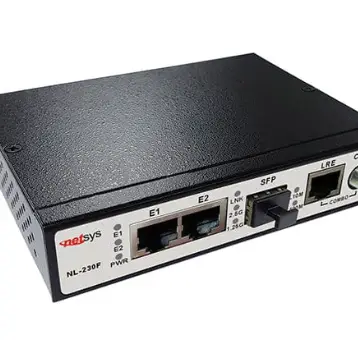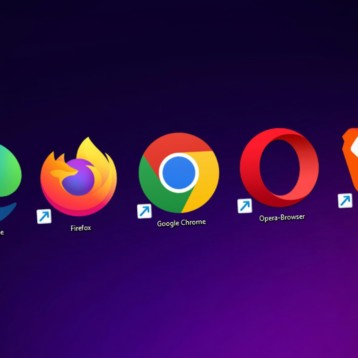
The Internet is a dangerous place with various types of threats — especially for individuals or organizations with important data or resources.
Among the well-known cyber-attacks, zero-day exploits are the most dangerous since no security shield (including antivirus and firewall security) provides full protection against zero-day attacks. Why is it so? Let’s find out below.
What is a Zero-day Exploit?
A zero-day exploit is an attack targeted using a new, non-fixed vulnerability right after the bug’s discovery. Since the bug or flaw is so new, there are almost zero protection against it. The reason to call it zero-day exploit: the exploit is targeted on the same day or zero days after a new vulnerability is found.
In other words, if a bug is found in firmware, hardware, or software, hackers use the bug to target an attack on the same day of its discovery. That’s why it’s called zero-day exploit. The vulnerability used for the attack is called zero-day vulnerability. Once it’s known to the public, it’s called n-day vulnerability.
Most times, the developer or organization behind the firmware, hardware, or software is informed about the bug whenever it’s found, but it takes some time to develop a fix for the bug and release it to the public. This is the time-frame which is used by hackers to launch zero-day exploits for malicious motives.
For example, let’s learn about one of the earliest zero-day exploits — Stuxnet. It was a self-replicating worm that disrupted the nuclear plants of Iran. Its task was to gain control of the systems and shut down the plants. It was so popular that its story got documented in “Zero Days”, which is available for rent in the U.S.
When Zero-day Exploits become Worst Attacks?
If a bug or flaw is found and the world at large is directly informed without informing and providing the software company the required time to fix the flaw, hackers can immediately utilize the opportunity to launch zero-day attacks.
Since the software company or developer doesn’t know the zero-day bug or vulnerability beforehand, it takes more time to develop the bug fix, giving more time to the hackers to target attacks using the new zero-day vulnerability.
Also, if the hackers discover a bug or vulnerability by themselves in hardware or software. Then, the software vendor or the public knows nothing about the zero-day vulnerability, making them almost unguarded against its attacks.
That’s why security researchers usually cooperate with software companies for zero-day vulnerabilities. First and foremost, they notify the software company about the bug or flaw and provide an agreed amount of time to them to create the bug fix and distribute it to the public as its software patch or update.
Then, they disclose the details of the zero-day vulnerability to the public only after the bug fix is distributed at large or a reasonable period of time. Of course, they may disclose the bug details sooner if it’s known to be a critical flaw.
For instance, Google Project Zero is a dedicated team of security analysts tasked with finding zero-day vulnerabilities in well-known apps and websites. They follow the security industry guidelines of providing 90 days to the developer or company for fixing the flaw or just 7 days if the flaw is reported “critical”.
Why Zero-day Exploits are So Dangerous?
On the first day, any bug or vulnerability in an online or offline software is not yet fixed by its company or developer. So, zero-day exploits guarantee a high probability of a successful attack for attackers. That’s the reason zero-day exploits are very dangerous for the target individual or organization.
It’s believed that advanced cybercrime or hacking groups — especially some organized cybercrime groups — reserve their set of zero-day vulnerabilities for attacking high-value targets. Their list usually includes foreign governments’ websites, financial or popular institutions, or other beneficial targets.
For example, Mozilla Firefox had two unknown, zero-day bugs in June 2019 — “Type confusion in Array.pop” and “Sandbox escape using Prompt:Open”. A group of hackers somehow discovered these zero-day vulnerabilities and used them to target attacks on various cryptocurrency exchanges, unfortunately.
The list of targeted exchanges included Coinbase — the biggest cryptocurrency exchange in the U.S., per a post by ZDNet. Fortunately, the attack was detected by its employees, else the bugs could have allowed hackers to gain access to the backend network and steal funds from the cryptocurrency exchange.
That’s not all; the problem with zero-day vulnerabilities doesn’t get resolved until the users have installed the required patch or update in their systems. Of course, this process takes some time as well, and then, there are users (mostly corporate admins or users) who fail to patch a zero-day vulnerability.
What is the end result? Attackers try to find unpatched systems and target the n-day vulnerability to gain access over the vulnerable systems — especially the most critical targets like big corporations and monetary institutions.
For instance, Equifax — one of the popular credit reporting agencies in the U.S. — was breached in May 2017. The hackers targeted an n-day vulnerability in Apache Struts that was reported and fixed two months ago, but Equifax hadn’t installed the patch on its systems, per a statement given by Equifax.
How to Defend against Zero-day Exploits?
Zero-day exploits pose serious security risks, which may result in potential loss or theft of your or your company’s critical data. However, there is no full-proof protection against zero-day attacks, but there are proactive security measures that help your systems to detect and defend against zero-day exploits.
- Deploy a 360-degree security suite – A modern security suite that offers all-around protection can prove to be the first defense against zero-day threats. It usually looks for suspicious activities or threats in real-time using machine learning algorithms and protects your systems.
- Update apps and operating system – A zero-day attack leverages on the unknown vulnerabilities, so it’s a must to keep your apps and systems up-to-date by installing the latest patches and updates. This will ensure that you’ll be safe from attacks targeting n-day vulnerabilities.
- Deploy a set of IDS and IPS systems – Intrusion Detection System and Intrusion Prevention System combinedly works to protect your systems against known and unknown intruders. They may not detect threats all the time, but they’ll alert about the hackers’ suspicious activities.
- Perform vulnerability scans regularly – You must scan your enterprise systems for vulnerabilities at regular intervals to detect any known bugs. Then, patch or quarantine the bugs/flaws to avoid n-day attacks.
- Deploy network access control toolkit – Network Access Control (NAC) is a method to deploy security policies or restrictions across a network. It’s essential to lock down critical or secure systems from other systems. So, it bans hacked or rogue systems from accessing crucial systems.
That’s all about the zero-day exploits. What is the difference between zero-day and n-day exploits? Please write a comment below to provide your feedback.







![10 Top Game Sites Not Blocked By School [2024 Updated]](https://thefutureofthings.com/wp-content/uploads/2024/10/image-25-358x358.png)


